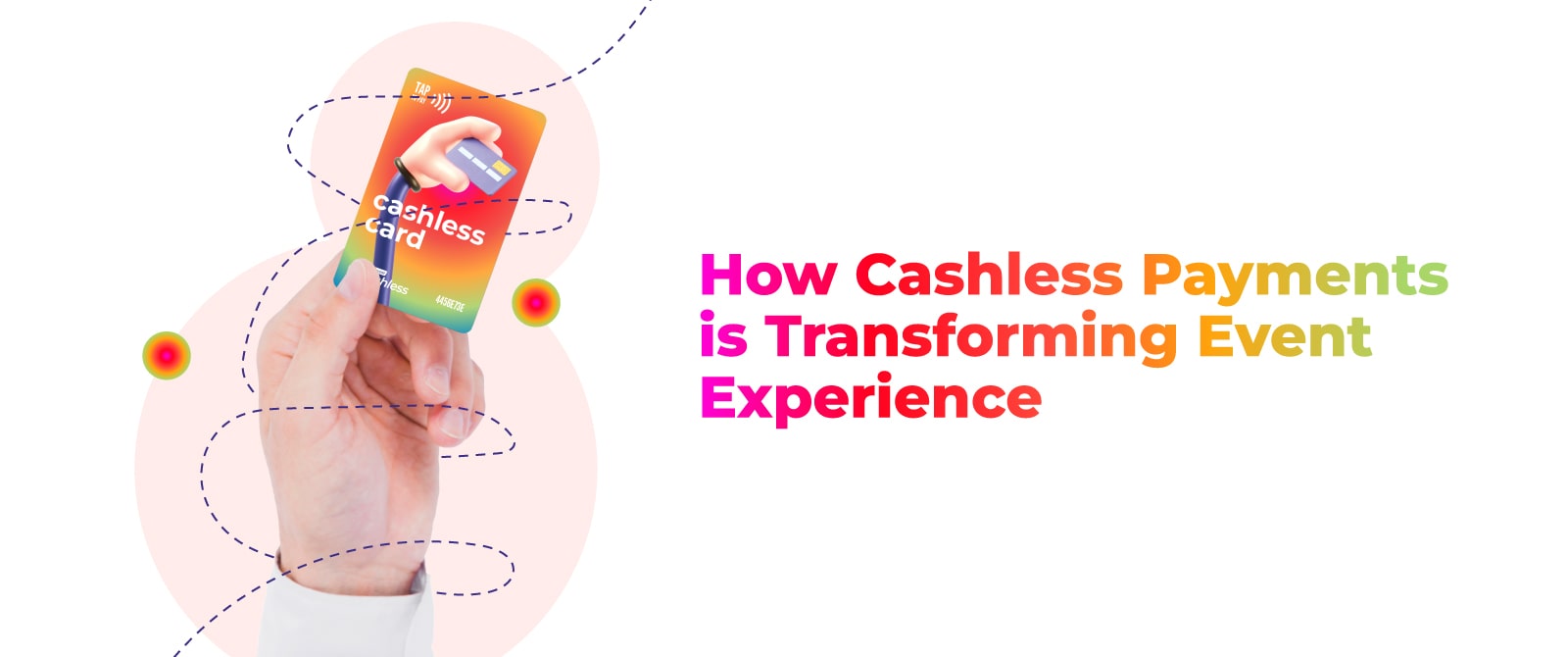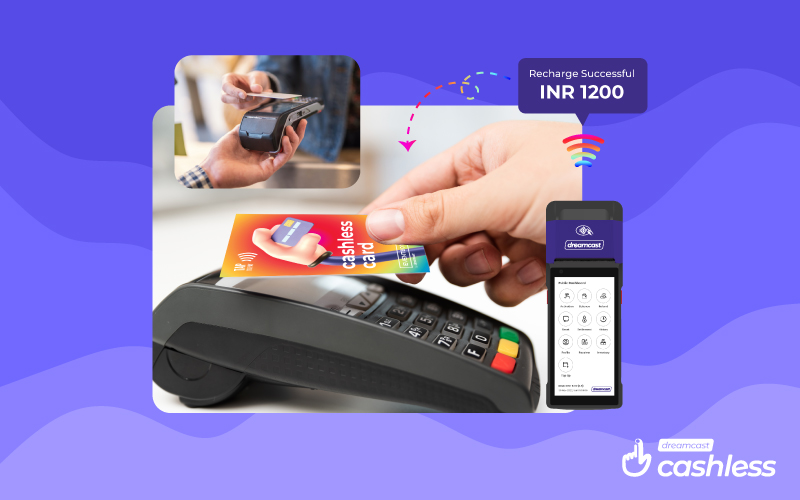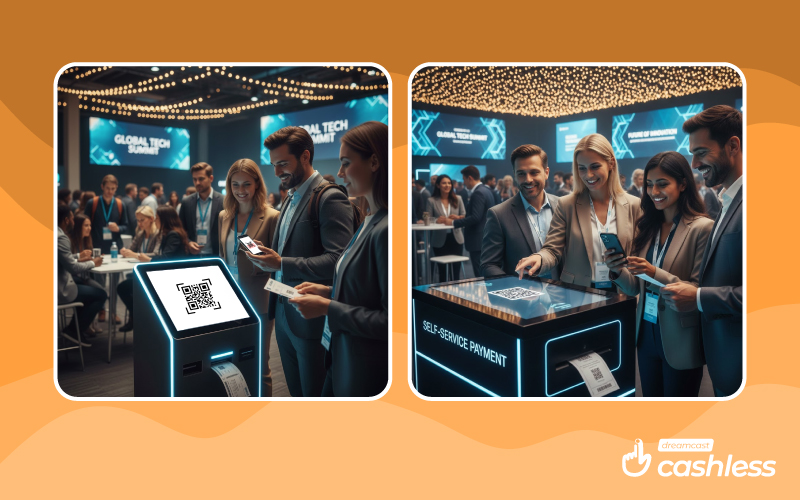Cashless payments have become the most recognizable payment method, helping people to eliminate the use of cash and making transactions more secure. Cashless payments incorporated by RFID technology bring a transformational convenience to the lives of attendees at events. From streamlining the entry process to making fast purchases, RFID Cashless payment is undoubtedly the most successful revolution for businesses around the world.
A study by MIT researcher Drazen Prelec found that people spending their money through their cards were likely to spend twice as much as cash buyers. So, understanding how exactly cashless cards are helping attendees enhance their event experience has become important.
In this article, we’ll delve into the transformative impact of cashless payments, exploring how this modern approach is revolutionizing the attendee experience at events of all sizes.

Benefits and Impact of Cashless Payments On Event Attendee’s Experience
RFID wristbands for cashless payments can significantly enhance the attendee experience at events in several ways:

1. Streamlining Entry Processes:
Imagine arriving at an event and seamlessly entering without fumbling for tickets or dealing with paper currency. Cashless payment for attendees, particularly through RFID technology, streamline entry processes. Attendees can preload funds onto RFID-enabled wristbands, allowing for swift, hassle-free entry with just a quick tap.
2. Convenience at Your Fingertips:
Cashless payments redefine convenience for event-goers. Instead of carrying cash or worrying about card transactions, attendees can use a simple tap or scan to make purchases, access exclusive areas, or participate in various activities. This simplicity not only accelerates transactions but also adds ease to the entire event experience.
3. Security Reinvented:
Security is a top concern for both event organizers and attendees. Cashless payments, with their encrypted and secure authentication measures, bring better security to the event. Attendees can make transactions with confidence, knowing that their financial information is safeguarded against theft or unauthorized access.
4. Effortless Purchases with RFID Wristbands:
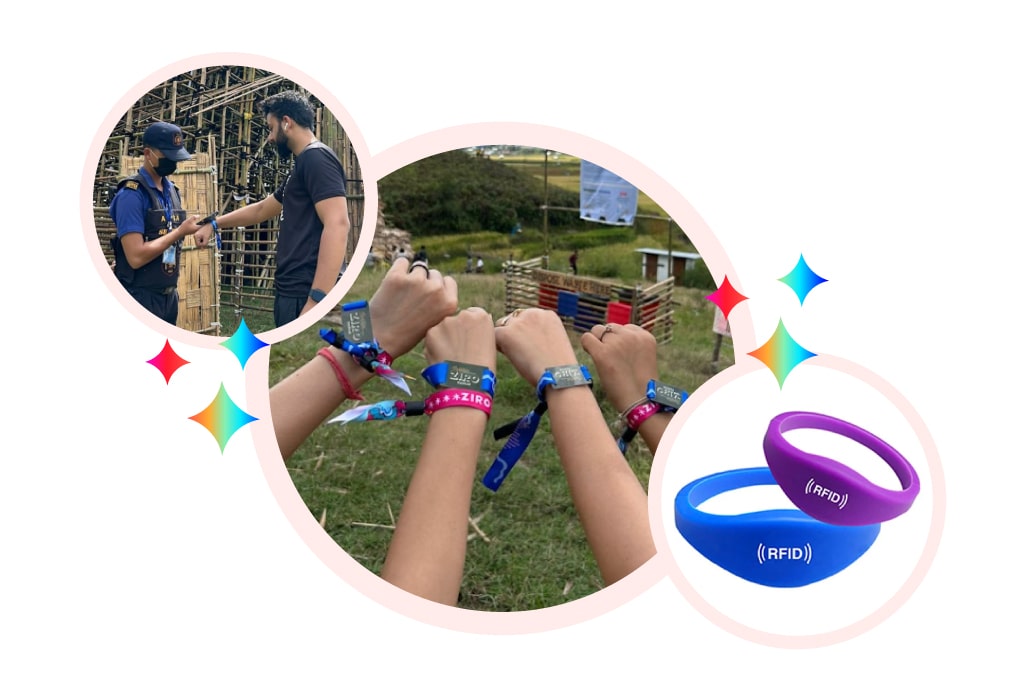
RFID wristbands have made purchases easy and efficient at events. Attendees preload funds onto these wristbands and can then make purchases with a simple tap. This not only reduces transaction times but also adds a touch of fun to the buying process, enhancing the overall event experience.
5. Real-Time Spending Monitoring:
Cashless systems empower attendees with real-time monitoring of their spending. Through associated apps or online platforms, participants can keep track of their transactions, set spending limits, and receive instant updates on their remaining balance. This feature promotes financial awareness and helps attendees manage their budgets effectively throughout the event.
6. Personalized Experiences Through Data Insights:
The data generated by cashless transactions provides organizers with valuable insights into attendee behavior. This data-driven approach enables event organizers to offer personalized experiences, from targeted promotions and discounts to customized recommendations based on individual preferences. Attendees, in turn, benefit from a more tailored and engaging event journey.
7. Reduced Queues and Faster Service:
The speed and efficiency of cashless transactions contribute to reduced queues at various points within the event venue. Whether at entry gates, food stalls, or merchandise booths, attendees experience faster service, minimizing wait times and optimizing the overall flow of the event.
8. Enhanced Interaction with Sponsors:
Sponsors play a crucial role in event financing, and cashless systems offer unique opportunities for enhanced interaction. Sponsors can integrate their branding into the cashless payment process, providing increased visibility and engagement. Exclusive sponsored zones, branded payment methods, and targeted promotions create a symbiotic relationship that benefits both sponsors and attendees.
9. Gamification and Interactive Experiences:
In addition to simplifying transactions, cashless payments open the door to gamification and interactive experiences. Attendees can engage in interactive challenges, exclusive rewards, and gamified activities tied to their cashless transactions, adding an element of fun and excitement to the event.

How RFID Cashless Payments Benefits Event Organizers
While attendees enjoy the benefits of cashless payments, event organizers also reap significant advantages. Let’s explore how the adoption of cashless systems positively impacts the organizers’ side of the event.
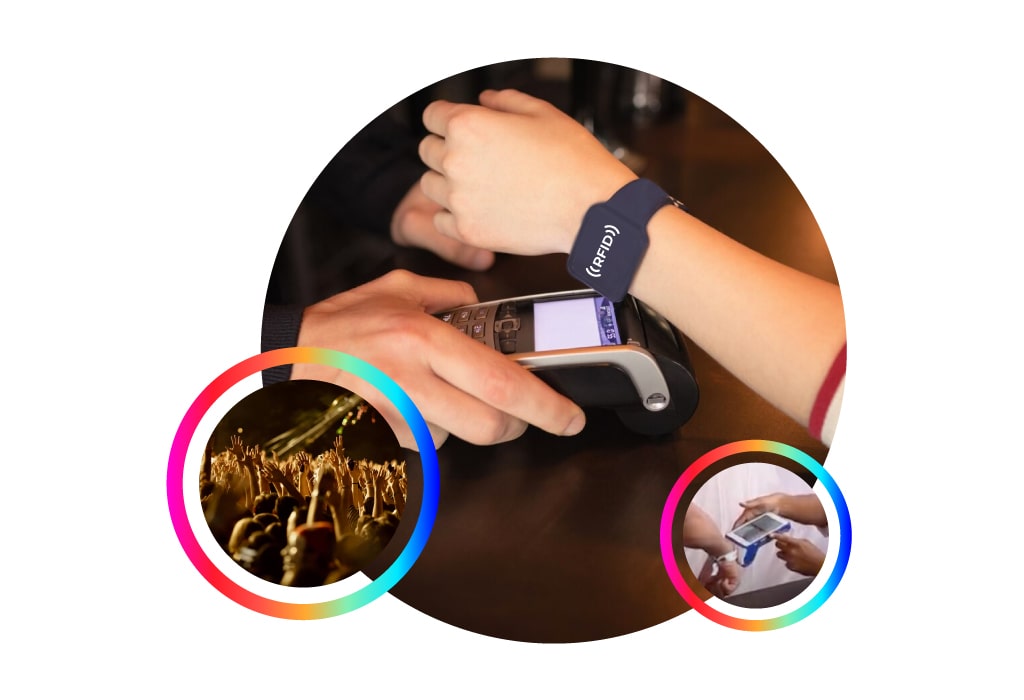
1. Streamlined Event Logistics:
Cashless payments streamline event logistics in many ways. The elimination of cash handling reduces the risk of errors, theft, and the need for extensive cash reconciliation processes. This operational efficiency allows event organizers to allocate resources more strategically, focusing on enhancing the overall event experience.
2. Enhanced Revenue Opportunities:
The introduction of cashless payments opens up new revenue streams for event organizers. Beyond traditional ticket sales, organizers can capitalize on in-event purchases, upselling opportunities, and exclusive experiences facilitated by cashless transactions. Sponsors, vendors, and exhibitors also benefit from increased visibility and transactional engagement, creating a relationship that contributes to the financial success of the event.
3. Data-Driven Decision Making:
The data generated by cashless payments serves as a treasure trove of insights for event organizers. From peak transaction times to popular products or experiences, organizers can harness this data to make informed decisions. This data-driven approach extends to marketing strategies, attendee engagement initiatives, and the overall design of future events, fostering a continuous cycle of improvement based on real-time insights.
4. Customized Marketing and Promotions:
Having behavioral data of attendees, organizers can craft highly targeted and customized marketing and promotional campaigns. Whether it’s offering personalized discounts, incentivizing specific behaviors, or tailoring communication to individual preferences, cashless payments enable organizers to create a more personalized and engaging experience for each participant.
5. Improved Attendee Flow and Experience:
The streamlined nature of cashless transactions contributes to improved attendee flow within the event venue. Reduced wait times at points of sale and seamless transaction processes enhance the overall experience. It allows participants to navigate the event space more freely and engage with various offerings hassle free.
6. Increased Sponsorship Appeal:
The integration of cashless payments provides organizers with a powerful tool to attract sponsors. Sponsors are drawn to the prospect of increased visibility, targeted promotions, and data-driven insights into attendee behavior. The appeal of sponsor-branded payment methods, exclusive cashless zones, and other integration opportunities within the payment system elevates the sponsorship value proposition, fostering stronger and more lucrative partnerships.
7. Future-Proofing Events:
Embracing cashless payments is a strategic move towards future-proofing events. As digital and contactless technologies continue to evolve, staying ahead of the curve ensures that events remain relevant and aligned with the expectations of an increasingly tech-savvy audience. This forward-looking approach positions event organizers at the forefront of industry trends and innovation.
The Future of Cashless Payments in Event Experiences
The transformative impact of cashless payments on the attendee experience is not static. It’s an ongoing evolution that holds the promise of even greater advancements. Several key trends and developments are shaping the future trajectory of cashless transactions at events.
1. Widespread Adoption of Wearables:
Wearable technology, including RFID wristbands and smart devices, is gaining momentum as a preferred mode of cashless transactions at events. The convenience and versatility offered by wearables align with the desire for a seamless and hands-free payment experience, contributing to the broader trend of wearables becoming integral to event participation.
2. Global Standardization of Protocols:
Efforts towards global standardization of cashless payment protocols are underway. As interoperability between different systems becomes more seamless, attendees can enjoy a seamless event cashless experience. This standardization is crucial for international events and festivals, where attendees come from diverse regions with varying payment infrastructures.
3. Greater Emphasis on Sustainability:
The future of cashless payments will likely see an increased emphasis on sustainability. Digital and contactless transactions contribute to reducing the environmental impact associated with the production, circulation, and disposal of physical currency. Event organizers and attendees alike can align their values with eco-friendly and sustainable practices by embracing cashless payment options.
FAQs
Ans: Cashless payments in events refer to the use of digital and contactless methods for transactions instead of traditional physical currency. This includes payment options such as credit/debit cards, mobile payment apps, and RFID technology.
Ans: Cashless payments redefine convenience by enabling attendees to make purchases, access exclusive areas, or participate in activities with a simple tap or scan. This eliminates the need for carrying cash or dealing with card transactions.
Ans: RFID wristbands allow attendees to preload funds and make purchases with a simple tap. This not only speeds up transaction times but also adds a fun and novel element to the buying process, enhancing the overall event experience.
Ans: The data generated by cashless transactions provides organizers with insights into attendee behavior. This data-driven approach enables organizers to offer personalized experiences, including targeted promotions and customized recommendations based on individual preferences.
Ans: Cashless transactions, known for their speed and efficiency, contribute to reduced queues at various points within the event venue. This leads to faster service, minimizing wait times and optimizing the overall flow of the event.


